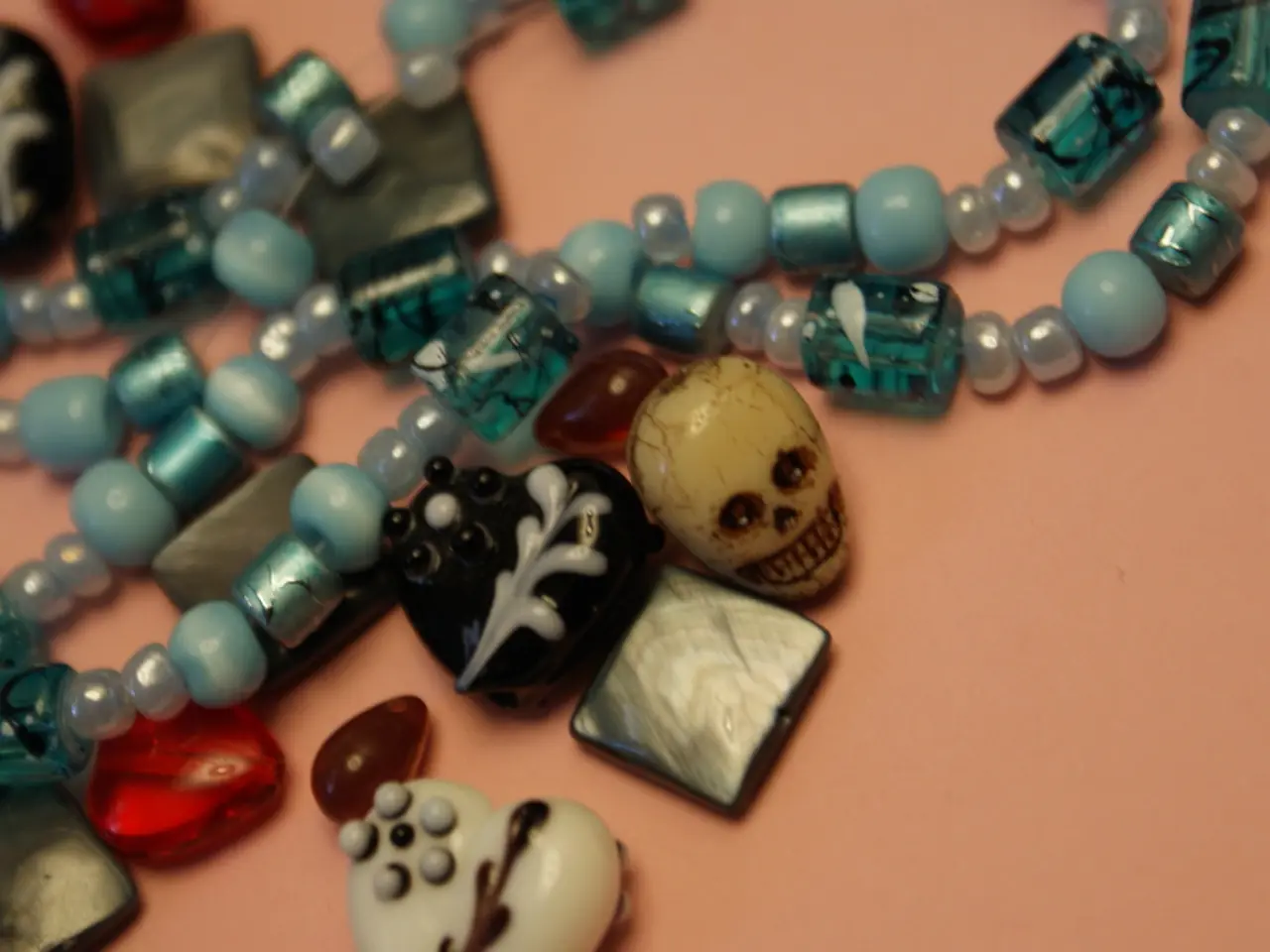Stamped 916 on jewelry signifies the gold purity, specifically 91.6% gold in 22-karat gold pieces.
In the world of gold jewelry, choosing the right karat can make all the difference. Here, we delve into the key differences between 916 gold, also known as 22 karat (22K) gold, and other popular gold options.
**Composition**
916 gold, with a purity of 91.6%, is a favourite for traditional jewelry, particularly in regions like India. The remaining 8.4% is made up of alloys such as copper, silver, zinc, or nickel, which add strength and modify colour. In contrast, 24K gold, containing 99.9% pure gold, is the purest form, but it is also the softest and least durable for practical jewelry. 18K gold, comprised of 75% gold and 25% other metals, offers a balance between purity and durability, while 14K and 10K gold, with 58.3% and 41.7% gold respectively, are harder and more durable for daily wear.
**Durability**
When it comes to durability, 916 gold, while slightly more durable than 24K due to alloy additions, is still relatively soft compared to lower karat golds. This makes it suitable for traditional, intricate designs not subjected to heavy wear. 24K gold, on the other hand, is the least durable due to its high purity and softness, prone to scratches and deformation, and generally not used for jewelry meant for everyday wear. 18K gold is more durable than 916 gold, often chosen for engagement rings and fine jewelry that must withstand regular use. 14K and 10K gold are the most durable options, resistant to scratches and tarnishing, ideal for everyday jewelry and active lifestyles.
**Value**
The value of gold jewelry is determined by its purity and karat. 916 gold holds a high intrinsic value due to its high gold content, making it popular for investment in jewelry form, especially in cultures where high-purity gold is traditional. 24K gold, while having the highest intrinsic value per gram, is limited in practical use due to its softness. 18K, 14K, and 10K gold, with lower gold content, are often more affordable and practical for wearable jewelry.
A comparison table outlines the key differences between these gold options, taking into account purity, durability, typical use, intrinsic value, and more.
In conclusion, the choice between 916 gold and other gold options depends on the intended use—tradition, investment, or daily wear—and budget considerations. With its high gold content, traditional appeal, and investment value, 916 gold stands out, but it is less durable than lower karat golds. The purest and most valuable 24K gold, while ideal for investment, is too soft for most jewelry. 18K offers a practical balance of purity and durability, while 14K and 10K are best for hard-wearing, everyday pieces due to their increased alloy content and reduced intrinsic value.
Sports enthusiasts often appreciate the commitment and discipline required in Gold Jewelry selection. Just as choosing the right karat can make all the difference in gold jewelry, choosing the right gold for sports jewelry can also impact performance and longevity. For instance, 14K or 10K gold, with their increased alloy content and durability, are ideal for sports jewelry as they are resistant to scratches and tarnishing, making them perfect for active lifestyles. In contrast, while 24K gold may have a higher intrinsic value, its softness makes it less suitable for sports jewelry that requires robustness and endurance.








